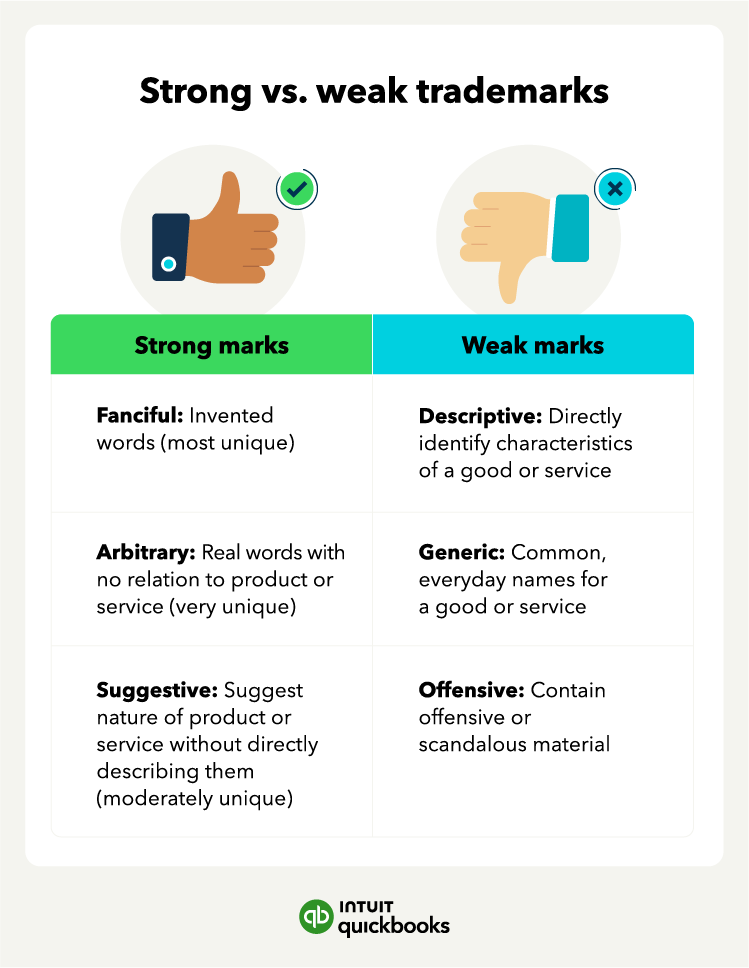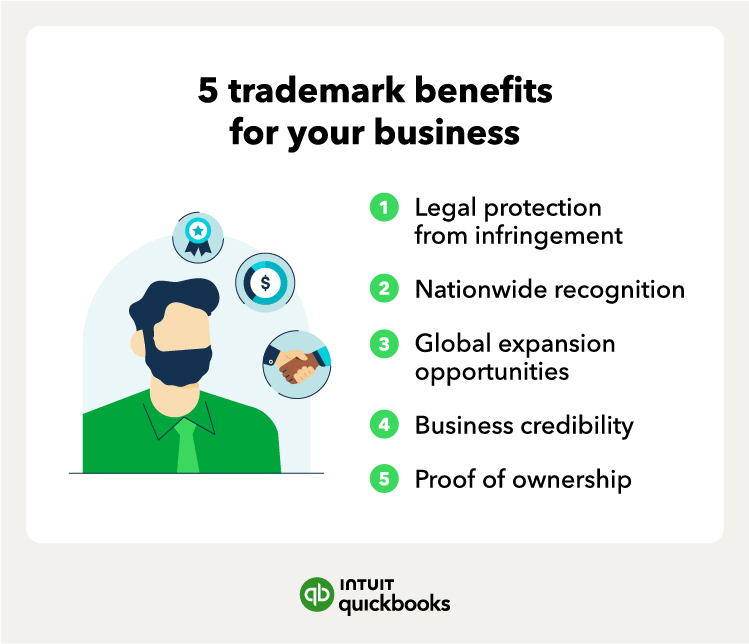2. Search for existing trademarks
Always check to see whether there are other companies, people, or brands out there whose mark has a high “likelihood of confusion” with yours. You can use the USPTO database to check if a similar mark is already registered or in use.
Remember that it’s not just about searching for people with the same mark or name but also uncovering similar ones. The USPTO may turn down your application if someone has already registered or applied for a mark that is the same or similar and they’re using it for related products or services.
If you find a similar trademark during your search, don't despair. Trademark rights have a renewal requirement every six years, and after the tenth year, it will expire. Check the status in the database—and if it’s expired, you could be in luck. If it’s live, it’s time to pivot and figure out a new trade name to register.
3. Define your goods or services
In addition to specifying the name or logo you want to trademark, you also need to define the goods and services you’re registering your trademark for. This is an important step, as doing it improperly may prevent the registration of your mark.
To define your goods or services, search the USPTO’s Trademark ID manual for the correct classification. Search under “Basic Fields” to find the appropriate ID for your service or good. If you don’t find it, you’ll need to write your description when applying with the TEAS Standard form. (This is not the case on the TEAS Plus form; see Step 6 for details.)
4. Identify your filing basis
You’ll also need to select your filing basis on your application form. You have four options, each with different requirements:
- Use in commerce basis: File if you are already using the mark in commerce for the goods or services listed in the application. You’ll need proof (like a product label) that shows it’s already in use.
- Intent-to-use basis: File if you intend to use the mark in commerce but haven't started using it yet. You can submit your proof of use later on.
- Foreign registration basis: If you’re outside of the US, file if you have a valid registration of the same mark in the country of origin. This extends your trademark protection to the US without actual use in US commerce.
- Foreign application basis: File if you have a pending application or registration for the same mark in a foreign country.
Essentially, you’re confirming whether you’ve used the mark in sales and products already or intend to use it (meaning your product or service is market-ready). Review the in-depth USPTO explainer for more information.
5. File the trademark application
You can file your initial application form on the USPTO website. You have two options: the TEAS Plus form and the TEAS Standard form.
TEAS Plus has a lower filing fee ($250 per class of good or service), but it has stricter requirements than TEAS Standard. To use the TEAS Plus form, you must:
- File a complete form
- Select your goods or services from the list in the ID Manual (described in Step 4—there is some room for customization, but you cannot write a “free-text” entry describing your product as with TEAS Standard)
- Pay full fees at the time of filing
- File later communications regarding the application through TEAS
- Receive all communications via email
The TEAS Standard form has an application fee of $350 per class of good or service. Use this option if you can’t satisfy the TEAS Plus requirements.
6. Wait for USPTO application review
Once you submit your trademark application, the review process will take several months. If you meet the filing requirements, you’ll receive a serial number to keep track of your application. The USPTO will forward your application to an examining attorney, who will review your application for approval.
If the USPTO approves your application, you will receive a notice of your trademark publication. After it’s published, any party who feels they may be impacted by your mark will have 30 days to act. If no opposition is filed, you’ll receive a certificate of registration from the USPTO in about 11 weeks.
Benefits of a registered trademark for your business
Registering a trademark can enhance the strength and recognition of your brand in various ways. Here are the key benefits:
- Legal protection: A trademark helps avoid legal issues since it provides exclusive legal rights that allow you to take legal action against anyone who tries to use a similar mark for their business.
- Nationwide recognition: A trademark offers nationwide visibility and protection that strengthens your brand’s presence beyond your local area.
- Global expansion opportunities: A registered trademark serves as a basis for obtaining trademark protection in foreign countries.
- Business credibility: A trademark gives your business credibility and lets customers know that your brand is legally protected.
- Use of the ® symbol: A trademark gives you the right to use the ® symbol next to your business name or logo, signaling that your mark is federally registered.
Ultimately, registering your trademark is a strategic investment that can contribute to the long-term success of your business.

















